A simple smocked apron in white linen, as worn by women in early 16th century Germany.
I made my first dress apron to provide some variety in my early 16th century middle class clothing – a simple addition which changes the whole look. Also very useful for hiding the skirt gap, especially after gaining weight…
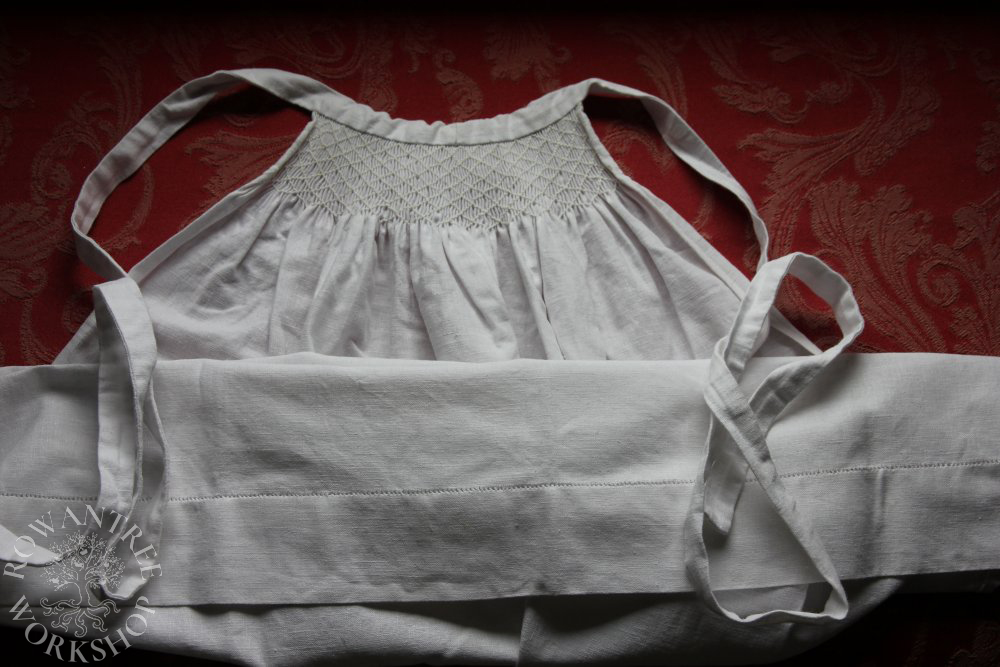
Research & Design
Early 16th century German women wore many different types of aprons, both practical and decorative. Textiler Hausrat (Zander-Seidel 1990) identifies several distinctive styles, including the Doppelschürze (double apron) and Halbschürze (half-skirt apron) and the Schurzfleck (‘patch’ apron).
The Schurzfleck is seen throughout the 16th century. It covers just the front of the dress, and was worn as a decorative apron by upper and middle class women, or as a working apron by farmers.

Source: Cranach Digital Archive
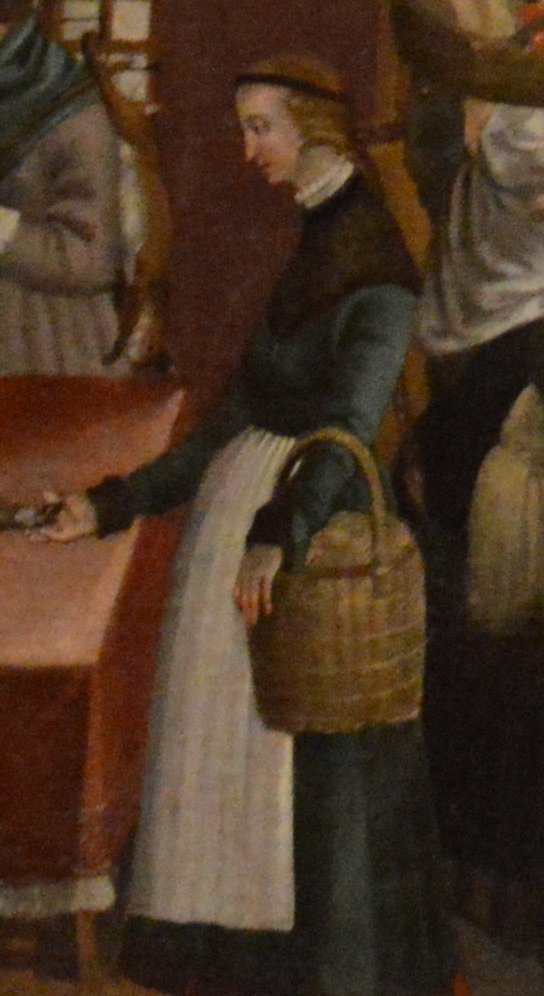
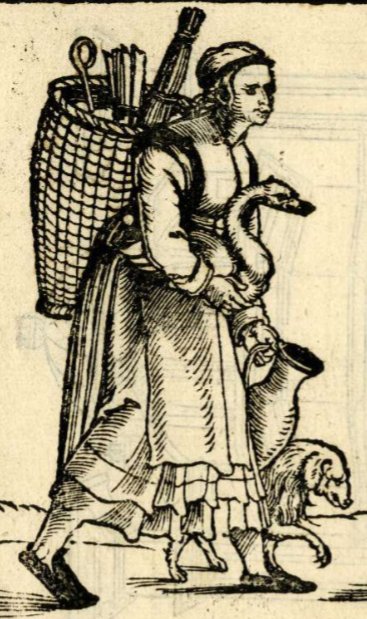
Textiler Hausrat notes that aprons were mainly made of linen, linen cotton or linen-wool fabrics, usually in white, red and black. The aprons are usually mid-calf in length – shorter than the skirts underneath.
All the images I have seen of this style of apron appear to be white, gathered into a band at the top and sometimes decorated with embroidery, especially over the top of the pleats, usually in white, black or red. This technique of sewing fine pleats in patterns is now referred to as ‘smocking’, although The Oxford English Dictionary’s earliest citation for this term is not until 1888.
Construction
I made my Schurz from a simple rectangle of medium-weight 24 count white linen, 95 x 75cm. I sewed a fine hem in linen thread on each side, then gathered the top in fine pleats by hand with 8 rows of gather threads, reducing the top width to 18cm.
I needed over 2m of tie, so I cut two 6cm strips the full width of the linen, then sewed these together at the selvedges. I sewed the pleated top onto the band, then turned it to the back and hemmed it over the pleats. I folded and sewed the long tails to make the ties.
With the top of the pleats secure, I embroidered the front of the pleats in a simple diamond fretwork patten 7cm deep, using the gathering threads as spacing. The pleats are sewn in wave-stitch, using white silk thread. Once complete, I removed the gather threads.
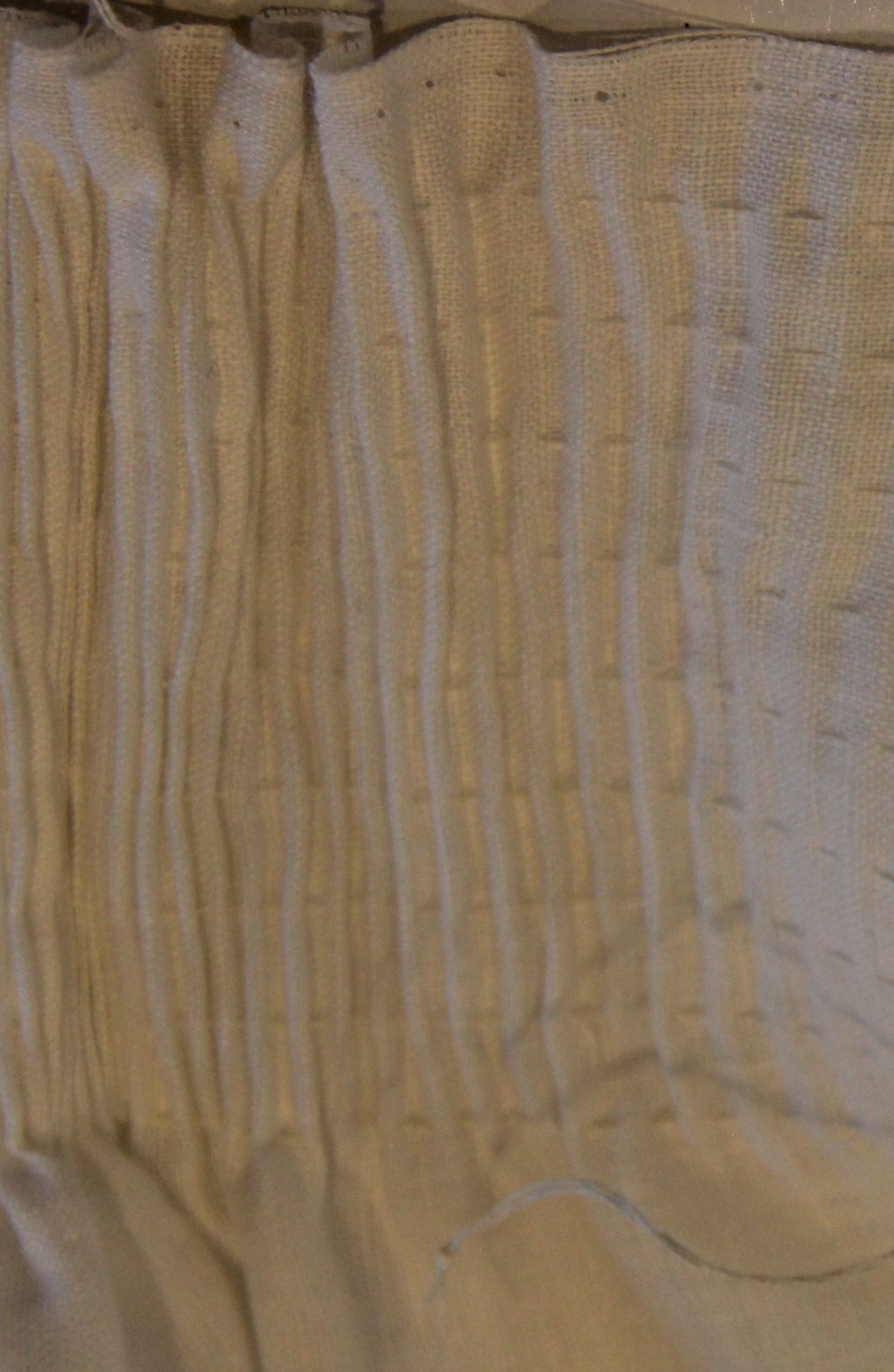
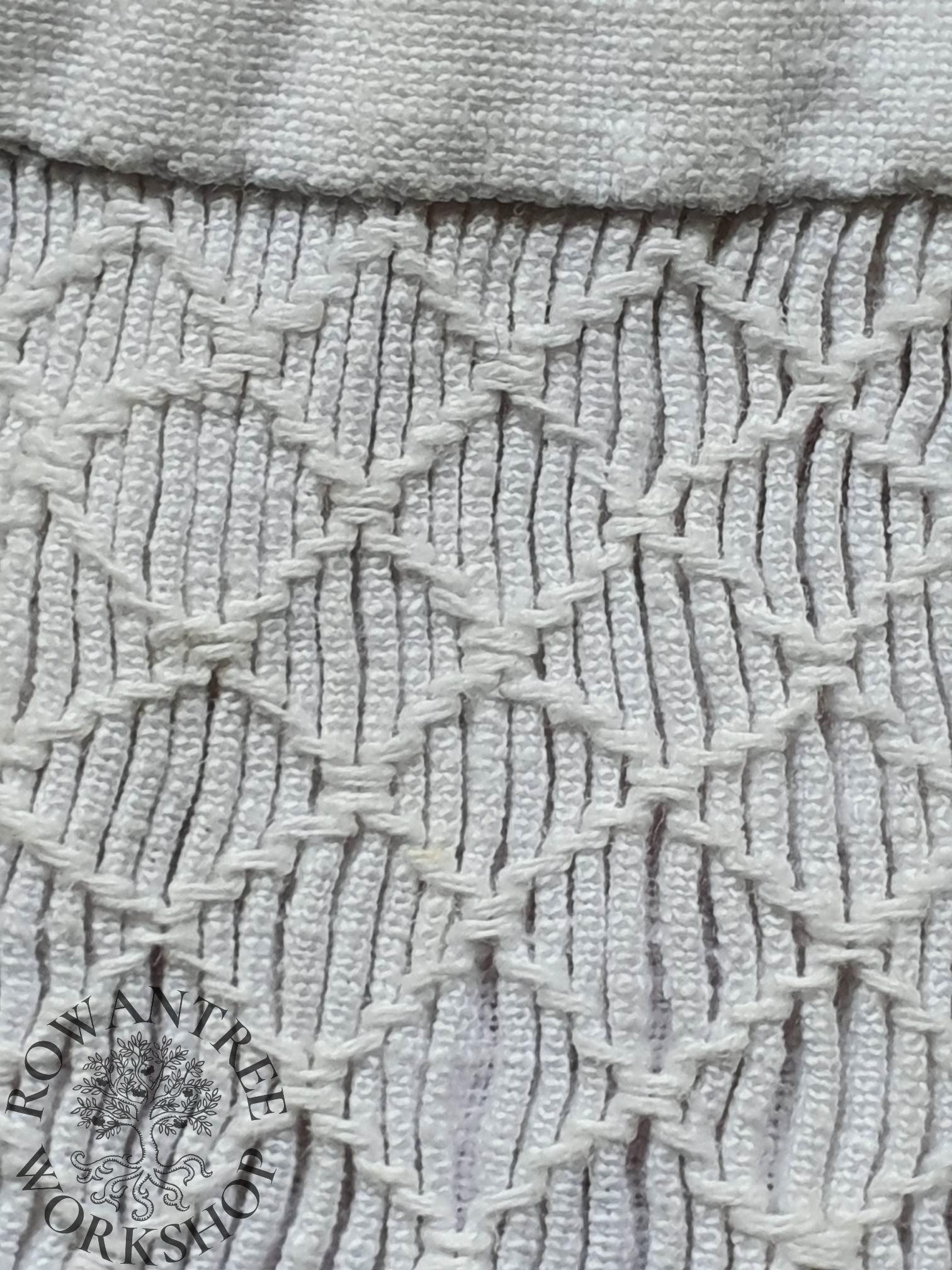

I turned a deep hem, and drew 4 rows of weft threads above the hem edge, so I could secure the hem using Hohlsaumstich (hemstitch). This simple drawn thread technique provides a strong, neat, decorative finish for securing hems on linens.
Ambuter (1982) notes that Modern hemstitch is worked from the right side and the slanting stitches are a feature of the work. Antique hemstitch was used to secure the folded edge of hems and is worked from the back, to ensure the folded edge is caught evenly with every stitch.
My apron is worked using the old form of the stitch, in fine linen thread. I drew 4 rows of weft threads and grouped in 3 for each stitch.
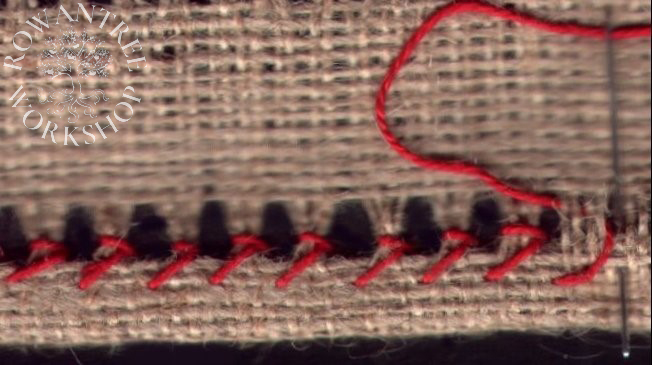
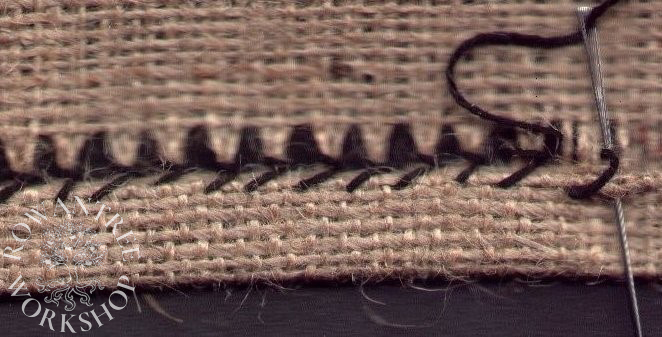

The finished apron proved very useful, and I made another embroidered in red silk, with a simple hem. I can’t find any pictures of me wearing the white apron, so here is the red embroidered one instead…

Afterword
Looking again at my collection of images, I now think that these show the embroidery in a solid block – not expanding at the base. If I was doing this again, I would work the embroidery differently, with the addition of a stabilising double line of stem stitch at both top and base.
I would also make the ties much narrower.

